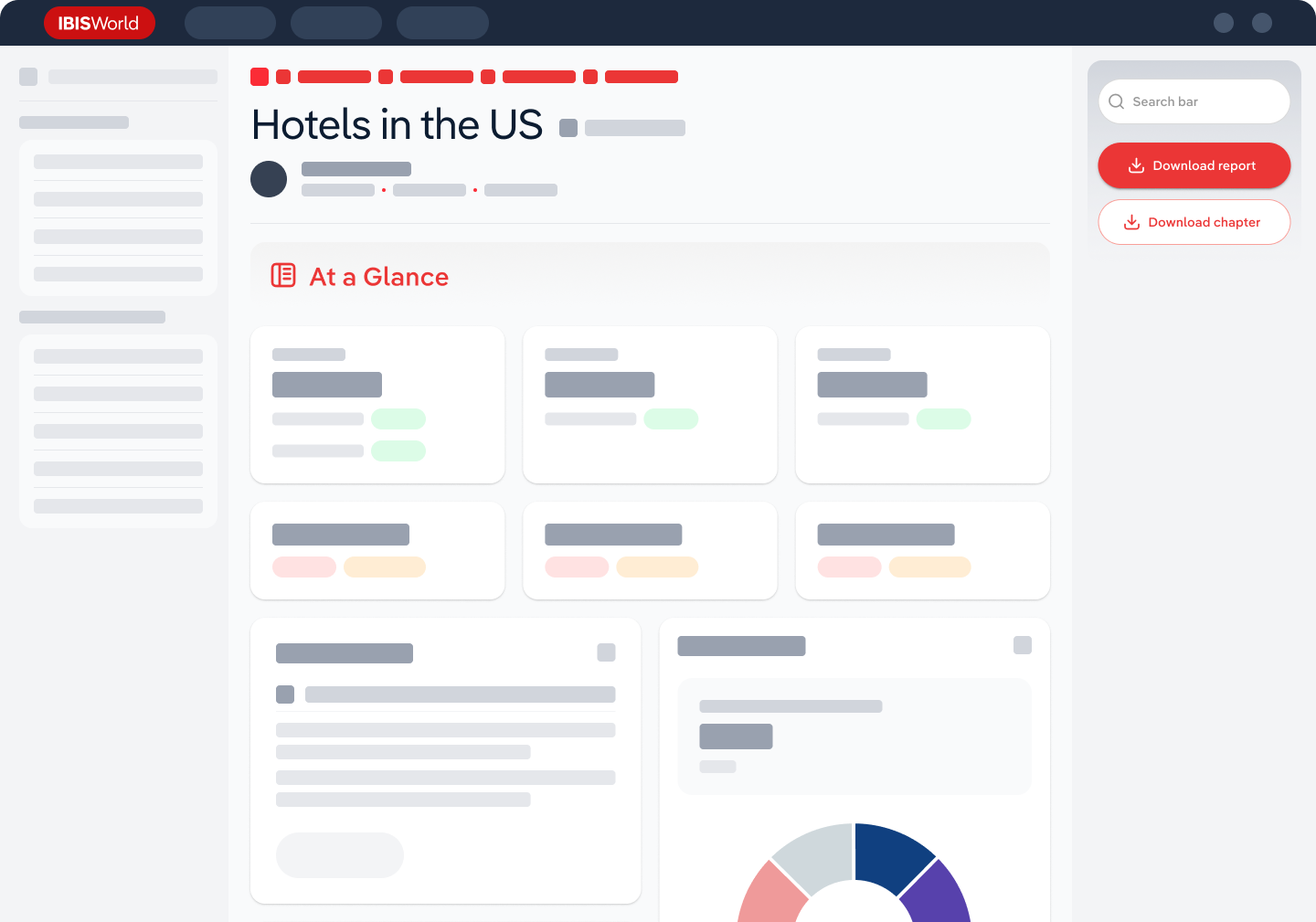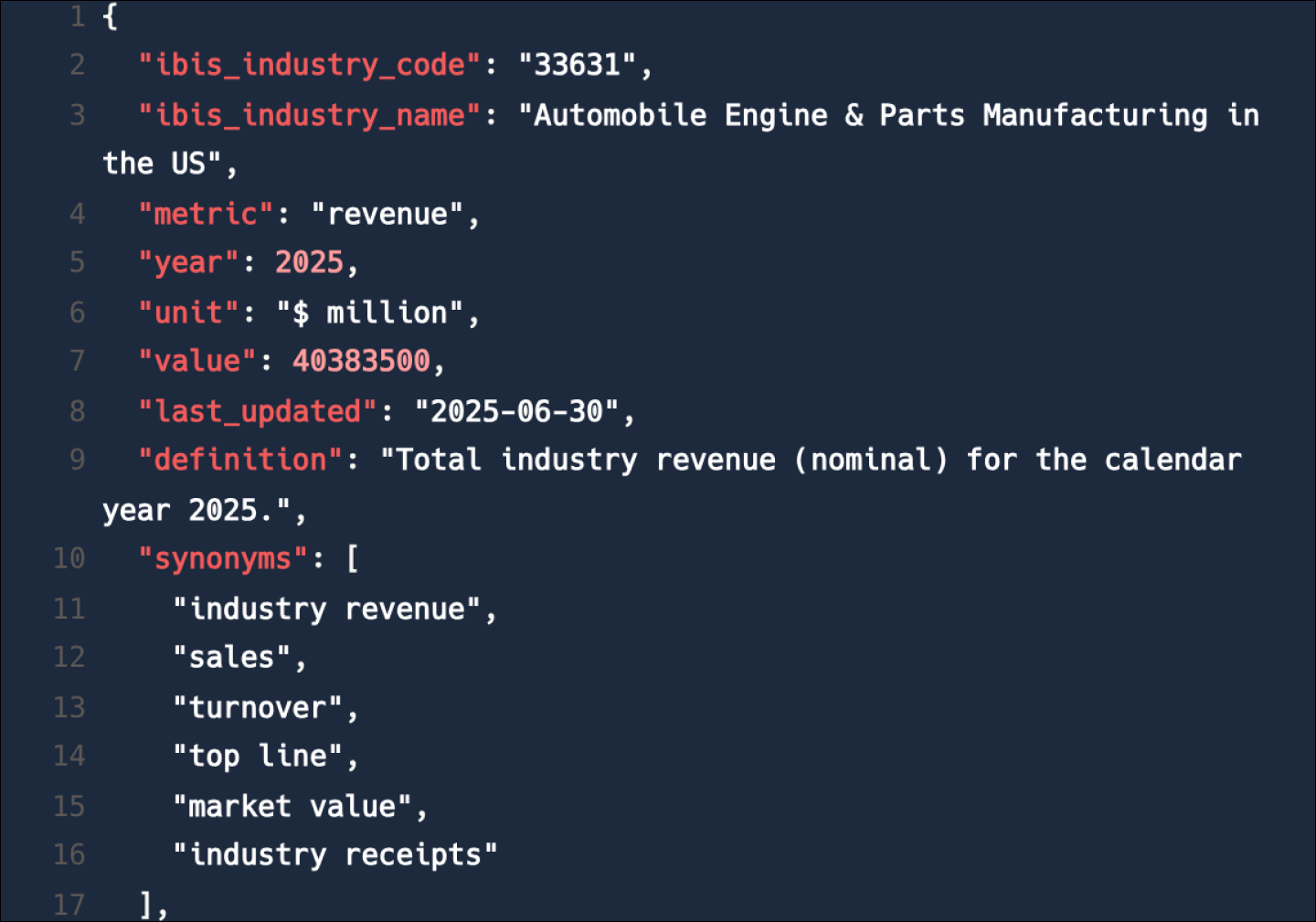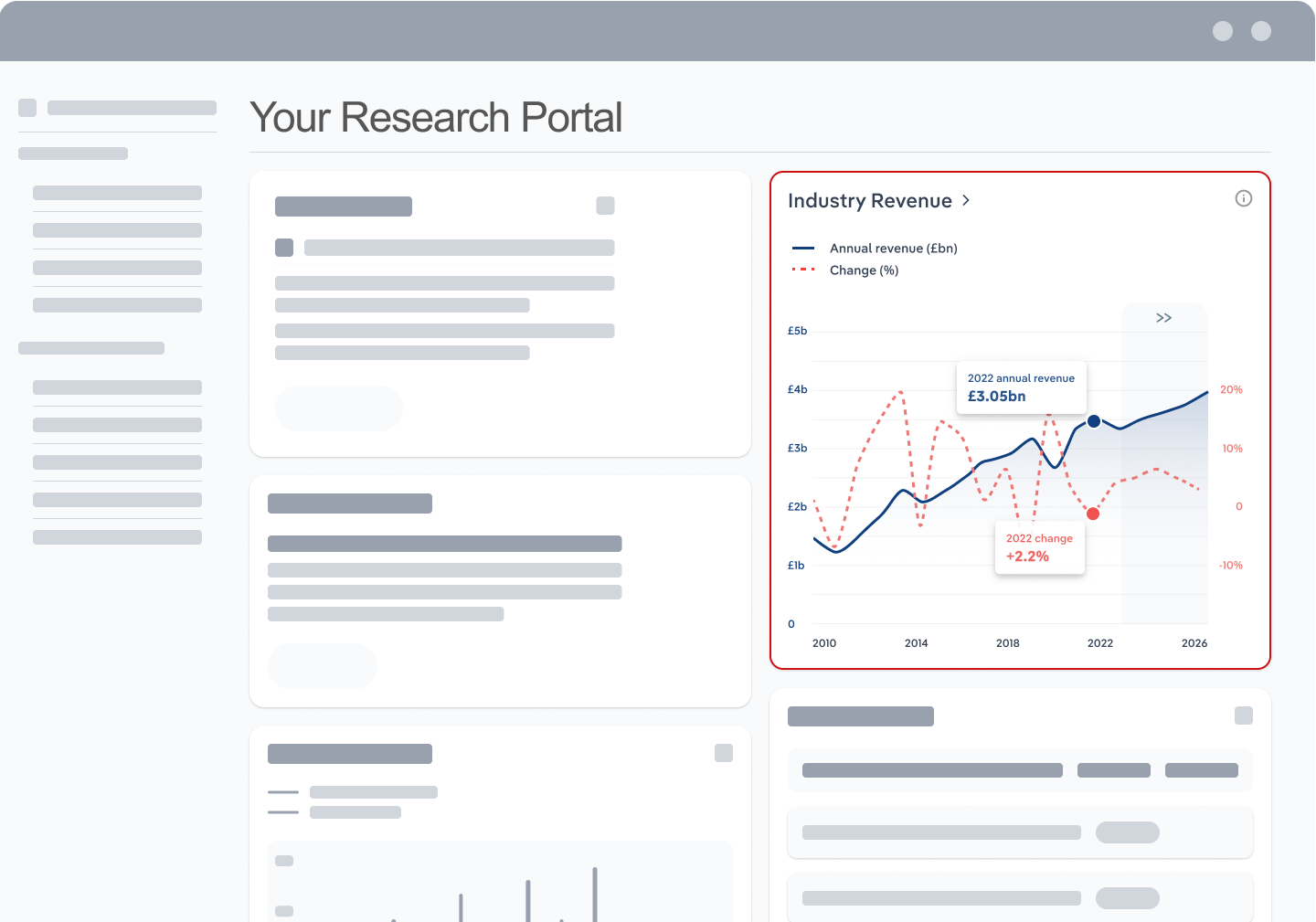Industry Statistics and Trends
Market size and recent performance (2015-2030)
Industry revenue has grown at a CAGR of 2.8 % over the past five years, to reach an estimated $405.1bn in 2025.
Trends and Insights
Mounting debt levels force states to tighten spending across departments
- State governments are tightening spending in response to widening budget deficits and rising debt levels. Queensland, in particular, is projecting a $45.8 billion budget shortfall over the four years to 2027-28. In its 2024-25 Budget, the government flagged potential deferrals of infrastructure projects and a greater reliance on public-private partnerships to reduce pressure on the state’s balance sheet. General government debt in Queensland is forecast to rise from $128.1 billion to $217.8 billion over the same period, prompting calls for structural financial reforms.
- Additional trends and insights available with purchase
Industry outlook (2025-2030)
Market size is projected to grow over the next five years.
Trends and Insights
Economic growth is set to remain subdued, tempering revenue expectations
- Australia’s GDP growth is forecast to average just 1.8% in 2025 and 2.2% in 2026, according to the OECD, as global trade tensions and softer commodity prices weigh on national output. Despite these headwinds, the economy recorded a 0.2% expansion in the first quarter of 2025, underscoring pockets of resilience in consumer spending and services.
Biggest companies in the State Government Administration in Australia
| Company | Market Share (%)
2026 | Revenue ($m)
2026 |
|---|---|---|
NSW Government | 121,259.0 | |
VIC Government | 108,343.0 | |
Queensland Government | 89,286.0 |
To view the market share and analysis for all 5 top companies in this industry, view purchase options.
Products & Services Segmentation
Industry revenue is measured across several distinct product and services lines, including Taxation , Grants and subsidies and Goods and services. Taxation is the largest segment of the State Government Administration in Australia.
Trends and Insights
State tax revenue rises on the strength of property and labour markets
- State and territory governments generate revenue by levying taxes on land, gambling, motor vehicles and economic transactions. The most significant taxes levied by states and territories include payroll taxes, land taxes and land transfer duties.
- More insights available in the full report
Table of Contents
About this industry
Industry definition
The State Government Administration industry includes the central administrative functions of Australia’s six states and two territories. It covers activities related to policy development, governance, and the delivery of public services across portfolios such as health, education, justice, transport, and infrastructure. The industry also includes departments responsible for managing state finances, intergovernmental relations, regulatory enforcement, and the distribution of grants and subsidies to other sectors and levels of government.
What's included in this industry?
Products and services covered in the State Government Administration industry in Australia include Financial and economic management of state governments, Legislation enactment and enforcement , Parliament operations, Policy formulation and administration, State government administration and Education and health services.Companies
Companies covered in the State Government Administration industry in Australia include NSW Government, VIC Government and Queensland Government.Purchase this report to view all 5 major companies in this industry.
Related Terms
Related terms covered in the State Government Administration industry in Australia include payroll tax, net operating balance, land tax, horizontal fiscal equalisation (hfe), tied grants and public sector wage gaps.Industry Code
ANZSIC 7520 - State Government Administration in Australia
Performance
Get an indication of the industry's health through historical, current and forward-looking trends in the performance indicators that make or break businesses.
Analyst insights
Despite modest revenue growth, states are grappling with expanding expenditure, particularly in healthcare, education and infrastructure. Fiscal consolidation measures like w...
In this chapter (4)
- Current Performance
- Outlook
- Volatility
- Life Cycle
Key metrics
- Annual Revenue, Recent Growth, Forecast, Revenue Volatility
- Number of Employees, Recent Growth, Forecast, Employees per Business, Revenue per Employee
- Number of Businesses, Recent Growth, Forecast, Employees per Business, Revenue per Business
- Total Profit, Profit Margin, Profit per Business
Charts
- Revenue, including historical (2015-2024) and forecast (2025-2030)
- Employees, including historical (2015-2024) and forecast (2025-2030)
- Businesses, including historical (2015-2024) and forecast (2025-2030)
- Profit, including historical (2015-2025)
- Industry Volatility vs. Revenue Growth
- Industry Life Cycle
Detailed analysis
- Trends in supply, demand and current events that are driving current industry performance
- Expected trends, economic factors and ongoing events that drive the industry's outlook
- Key success factors for businesses to overcome volatility
- How contribution to GDP, industry saturation, innovation, consolidation, and technology and systems influence the industry's life cycle phase.
Products and Markets
Learn about an industry's products and services, markets and trends in international trade.
Analyst insight
Economic recovery has significantly increased taxation revenue for state and territory governments. This is attributed to rising land values, employment levels, and taxes on ...
In this chapter
- Products & Services
- Major Markets
Key metrics
- Largest market segment and value in 2025
- Product innovation level
Charts
- Products & services segmentation in 2025
- Major market segmentation in 2025
Detailed analysis
- Trends impacting the recent performance of the industry's various segments
- Innovations in the industry's product or service offering, specialization or delivery method
- Key factors that successful businesses consider in their offerings
- Buying segments and key trends influencing demand for industry products and services
Geographic Breakdown
Discover where business activity is most concentrated in an industry and the factors driving these trends to find opportunities and conduct regional benchmarking.
Analyst insights
State government income is primarily from federal grants, subsidies and taxation. GST revenue is distributed under fiscal equalisation, which introduces necessary redistribut...
In this chapter (1)
- Business Locations
Charts
- Share of revenue, establishment, wages and employment in each region
- Share of population compared to establishments in each region in 2025
Tables
- Number and share of establishments in each region in 2025
- Number and share of revenue each region accounts for in 2025
- Number and share of wages each region accounts for in 2025
- Number and share of employees in each region in 2025
Detailed analysis
- Geographic spread of the industry across Asia Pacific, and trends associated with changes in the business landscape
- Key success factors for businesses to use location to their advantage
Competitive Forces
Get data and insights on what's driving competition in an industry and the challenges industry operators and new entrants may face, with analysis built around Porter's Five Forces framework.
Analyst insights
The dominance of certain state governments is driven by their large populations. The four largest states account for nearly 88.0% of revenue thanks to their high tax generati...
In this chapter (4)
- Concentration
- Barriers to Entry
- Substitutes
- Buyer & Supplier Analysis
Key metrics
- Industry concentration level
- Industry competition level and trend
- Barriers to entry level and trend
- Substitutes level and trend
- Buyer power level and trend
- Supplier power level and trend
Charts
- Market share concentration among the top 4 suppliers from 2020-2025
- Supply chain including upstream supplying industries and downstream buying industries, flow chart
Detailed analysis
- Factors impacting the industry’s level of concentration, such as business distribution, new entrants, or merger and acquisition activity.
- Key success factors for businesses to manage the competitive environment of the industry.
- Challenges that potential industry entrants face such as legal, start-up costs, differentiation, labor/capital intensity and capital expenses.
- Key success factors for potential entrants to overcome barriers to entry.
- Competitive threats from potential substitutes for the industry’s own products and services.
- Key success factors for how successful businesses can compete with substitutes.
- Advantages that buyers have to keep favorable purchasing conditions.
- Advantages that suppliers have to maintain favorable selling conditions.
- Key success factors for how businesses can navigate buyer and supplier power.
Companies
Learn about the performance of the top companies in the industry.
Analyst insights
State governments' main sources of revenue are grants and subsidies from the Federal Government and taxation. As such, the highly populated states generate the most tax reven...
In this chapter
- Market Share Concentration
- Companies
- Company Spotlights
Charts
- Industry market share by company in 2021 through 2025
- Major companies in the industry, including market share, revenue, profit and profit margin in 2025
- Overview of NSW Government's performance by revenue, market share and profit margin from 2019 through 2025
- Overview of VIC Government's performance by revenue, market share and profit margin from 2019 through 2025
- Overview of Queensland Government's performance by revenue, market share and profit margin from 2019 through 2025
- Overview of revenue, market share and profit margin trend for 2 additional companies
Detailed analysis
- Description and key data for NSW Government, and factors influencing its performance in the industry
- Description and key data for VIC Government, and factors influencing its performance in the industry
- Description and key data for Queensland Government, and factors influencing its performance in the industry
- Description, key data and performance trends for 2 additional companies
External Environment
Understand the demographic, economic and regulatory factors that shape how businesses in an industry perform.
Analyst insights
The Australian Constitution outlines the distinct responsibilities of the Commonwealth and state and territory governments. The Commonwealth has jurisdiction over specific ar...
In this chapter
- External Drivers
- Regulation & Policy
- Assistance
Key metrics
- Regulation & policy level and trend
- Assistance level and trend
Charts
- Regulation & Policy historical data and forecast (2015-2030)
- Assistance historical data and forecast (2015-2030)
Detailed analysis
- Demographic and macroeconomic factors influencing the industry, including Regulation & Policy and Assistance
- Major types of regulations, regulatory bodies, industry standards or specific regulations impacting requirements for industry operators
- Key governmental and non-governmental groups or policies that may provide some relief for industry operators.
Financial Benchmarks
View average costs for industry operators and compare financial data against an industry's financial benchmarks over time.
Analyst insights
State government administration continues to operate in deficit, with major costs driven by wages, depreciation and outsourced service delivery. While governments have made s...
In this chapter
- Cost Structure
- Financial Ratios
- Key Ratios
Key metrics
- Profit margin, and how it compares to the sector-wide margin
- Average wages, and how it compares to the sector-wide average wage
- Largest cost component as a percentage of revenue
- Industry average ratios for days' receivables, industry coverage and debt-to-net-worth ratio
Charts
- Average industry operating costs as a share of revenue, including purchases, wages, depreciation, utilities, rent, other costs and profit in 2025
- Average sector operating costs as a share of revenue, including purchases, wages, depreciation, utilities, rent, other costs and profit in 2025
- Investment vs. share of economy
Data tables
- Cash Flow & Debt Service Ratios (2015-2030)
- Revenue per Employee (2015-2030)
- Revenue per Enterprise (2015-2030)
- Employees per Establishment (2015-2030)
- Employees per Enterprise (2015-2030)
- Average Wage (2015-2030)
- Wages/Revenue (2015-2030)
- Establishments per Enterprise (2015-2030)
- IVA/Revenue (2015-2030)
- Imports/Demand (2015-2030)
- Exports/Revenue (2015-2030)
Detailed analysis
- Trends in the cost component for industry operators and their impact on industry costs and profitability
Key Statistics
Industry Data
Data Tables
Including values and annual change:
- Revenue (2015-2030)
- IVA (2015-2030)
- Establishments (2015-2030)
- Enterprises (2015-2030)
- Employment (2015-2030)
- Exports (2015-2030)
- Imports (2015-2030)
- Wages (2015-2030)
Top Questions Answered
Unlock comprehensive answers and precise data upon purchase. View purchase options.
What is the market size of the State Government Administration industry in Australia in 2025?
The market size of the State Government Administration industry in Australia is $405.1bn in 2025.
How many businesses are there in the State Government Administration industry in Australia in 2025?
There are 8 businesses in the State Government Administration industry in Australia, which has declined at a CAGR of 0.0 % between 2020 and 2025.
How may import tariffs affect the State Government Administration industry in Australia?
The State Government Administration industry in Australia is unlikely to be materially impacted by import tariffs with imports accounting for a low share of industry revenue.
How may export tariffs affect the State Government Administration industry in Australia?
The State Government Administration industry in Australia is unlikely to be materially impacted by export tariffs with exports accounting for a low share of industry revenue.
Has the State Government Administration industry in Australia grown or declined over the past 5 years?
The market size of the State Government Administration industry in Australia has been growing at a CAGR of 2.8 % between 2020 and 2025.
What is the forecast growth of the State Government Administration industry in Australia over the next 5 years?
Over the next five years, the State Government Administration industry in Australia is expected to grow.
What are the biggest companies in the State Government Administration industry in Australia?
The biggest companies operating in the State Government Administration industry in Australia are NSW Government, VIC Government and Queensland Government
What does the State Government Administration industry in Australia include?
Financial and economic management of state governments and Legislation enactment and enforcement are part of the State Government Administration industry in Australia.
Which companies have the highest market share in the State Government Administration industry in Australia?
The company holding the most market share in the State Government Administration industry in Australia is NSW Government.
How competitive is the State Government Administration industry in Australia?
The level of competition is low and steady in the State Government Administration industry in Australia.
Methodology
How are IBISWorld reports created?
IBISWorld has been a leading provider of trusted industry research for over 50 years to the most successful companies worldwide. With offices in Australia, the United States, the United Kingdom, Germany and China, we are proud to have local teams of analysts that conduct research, data analysis and forecasting to produce data-driven industry reports.
Our analysts start with official, verified and publicly available sources of data to build the most accurate picture of each industry. Analysts then leverage their expertise and knowledge of the local markets to synthesize trends into digestible content for IBISWorld readers. Finally, each report is reviewed by one of IBISWorld’s editors, who provide quality assurance to ensure accuracy and readability.
IBISWorld relies on human-verified data and human-written analysis to compile each standard industry report. We do not use generative AI tools to write insights, although members can choose to leverage AI-based tools within the platform to generate additional analysis formats.
What data sources do IBISWorld analysts use?
Each industry report incorporates data and research from government databases, industry-specific sources, industry contacts, and our own proprietary database of statistics and analysis to provide balanced, independent and accurate insights.
Key data sources in Australia include:
- Australian Bureau of Statistics
- Australian Taxation Office
- Australian Securities & Investments Commission
Analysts also use industry specific sources to complement catch-all sources, although their perspective may focus on a particular organization or representative body, rather than a clear overview of all industry operations. However, when balanced against other perspectives, industry-specific sources provide insights into industry trends.
These sources include:
- Industry and trade associations
- Industry federations or regulators
- Major industry players annual or quarterly filings
Finally, IBISWorld’s global data scientists maintain a proprietary database of macroeconomic and demand drivers, which our analysts use to help inform industry data and trends. They also maintain a database of statistics and analysis on thousands of industries, which has been built over our more than 50-year history and offers comprehensive insights into long-term trends.
How does IBISWorld forecast its data?
IBISWorld’s analysts and data scientists use the sources above to create forecasts for our proprietary datasets and industry statistics. Depending on the dataset, they may use regression analysis, multivariate analysis, time-series analysis or exponential smoothing techniques to project future data for the industry or driver. Additionally, analysts will leverage their local knowledge of industry operating and regulatory conditions to impart their best judgment on the forecast model.
IBISWorld prides itself on being a trusted, independent source of data, with over 50 years of experience building and maintaining rich datasets and forecasting tools. We are proud to be the keystone source of industry information for thousands of companies across the world.
Learn more about our methodology and data sourcing on the Help Center.










